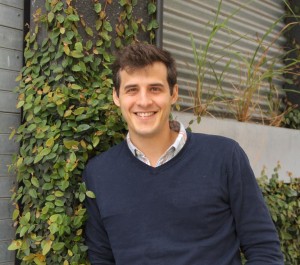I recently had the pleasure of interviewing Philip Winter on the Let There Be Water Podcast. Philip is the co-founder and CEO of Nebia, a San Francisco start-up that believes we can save lots of water by changing our showers, but without giving up on the pleasure or length of the experience.
Nebia’s revolutionary showerhead delivers shower water in tiny, atomized droplets. Philip told me that people who had tried one of several prototypes had reported a delight in standing under a mist and that they had no problem in getting their bodies wet or in getting the soap off their bodies or shampoo off their hair. And, he said, the Nebia showerhead saves 70% of the water used in a traditional shower.
Well, lucky me!As I was ending my interview with Philip, he mentioned that if I found myself in San Francisco, I could swing by the Nebia office to experience their shower.
Just as I was receiving my interview with Philip from the post-production studio, I had a few spare hours to kill before speaking to a group in San Francisco. I called Nebia and was invited to come over to take a shower. I got into a taxi in front of my hotel but the driver had difficulty finding the Nebia office, which is located in a converted garage on a small one-way street. (How true to the San Francisco start-up mythology: The company really got started in a garage!)
I was greeted warmly at Nebia by Philip and was introduced to most of the small, young and very friendly staff. A shower awaited, but before I could go in, Philip explained that the development for the Nebia showerhead is still being fine-tuned. He said that they hoped to be shipping the mist-based product by year’s end. I was warned that they are continually making modifications to the product and that the shower I was taking wouldn’t be the same as the actual product consumers would expect to get. They were still testing different angles and positions for the atomizing nozzles and the nozzle rates, among other variables.
Well prepared, I went into the small company bathroom, stripped down and turned on the water. As Philip had said in the podcast was often the case, it took a while for the water to get warm. With much less water flowing through the nozzles, it makes sense that it takes that much longer for the water to become comfortably warm. But it was noteworthy as being different from a traditional shower. It isn’t necessarily bad, but it is different.
I got under two prototype Nebia showerheads located side by side in the shower. Both produced a similar experience, but water came out of one with more intensity than the other. Given my familiarity with traditional showers, it isn’t surprising that I preferred the more intense mist. But neither of the prototype showerheads produced anything like the shower we all know, even a low-flow shower now installed in some hotels.
True to the Nebia promise, both showerheads got me wet almost immediately. But, rather than the pelting sensation you get from a strong shower, there was a delicate spray from several overhead nozzles built into each of the showerheads. I’m not sure if the familiar heavy flow from my shower is an aesthetic advantage or if I noticed its absence because I’m used to it. From a functional point of view, though, the purpose of getting wet is that shampoo and soap can be used, and the mist got me wet enough for that.
A problem developed when I put shampoo in my now-wet hair. Some shampoo got in my eyes and I couldn’t get enough water volume to flush my eyes as fast as I would be able to do in my shower at home. After a while, I rinsed out all of the shampoo and, eyes still stinging, soaped up my body. The soap came off without any problem, but it seemed like it may have taken a bit longer than usual.
Even if the Nebia showerhead may not be ready today — and the company makes no pretense that it is — it seems a promising idea in water saving. A traditional shower uses about 2.5 gallons per minute while a Nebia shower uses only seven-tenths of a gallon. The Nebia showerhead’s $349 launch price makes it a luxury item, but costs will presumably come down quickly once it can be manufactured in some volume.
Once consumers get accustomed to their Nebia shower, I suspect they will like it. My shower took longer than I expect the final version will take, and I wish there was a switch I could press for high-volume in situations like my need to rinse my eyes, but my San Francisco shower was an experience that left me with a very positive feeling about the company. I hope they are a big success.
